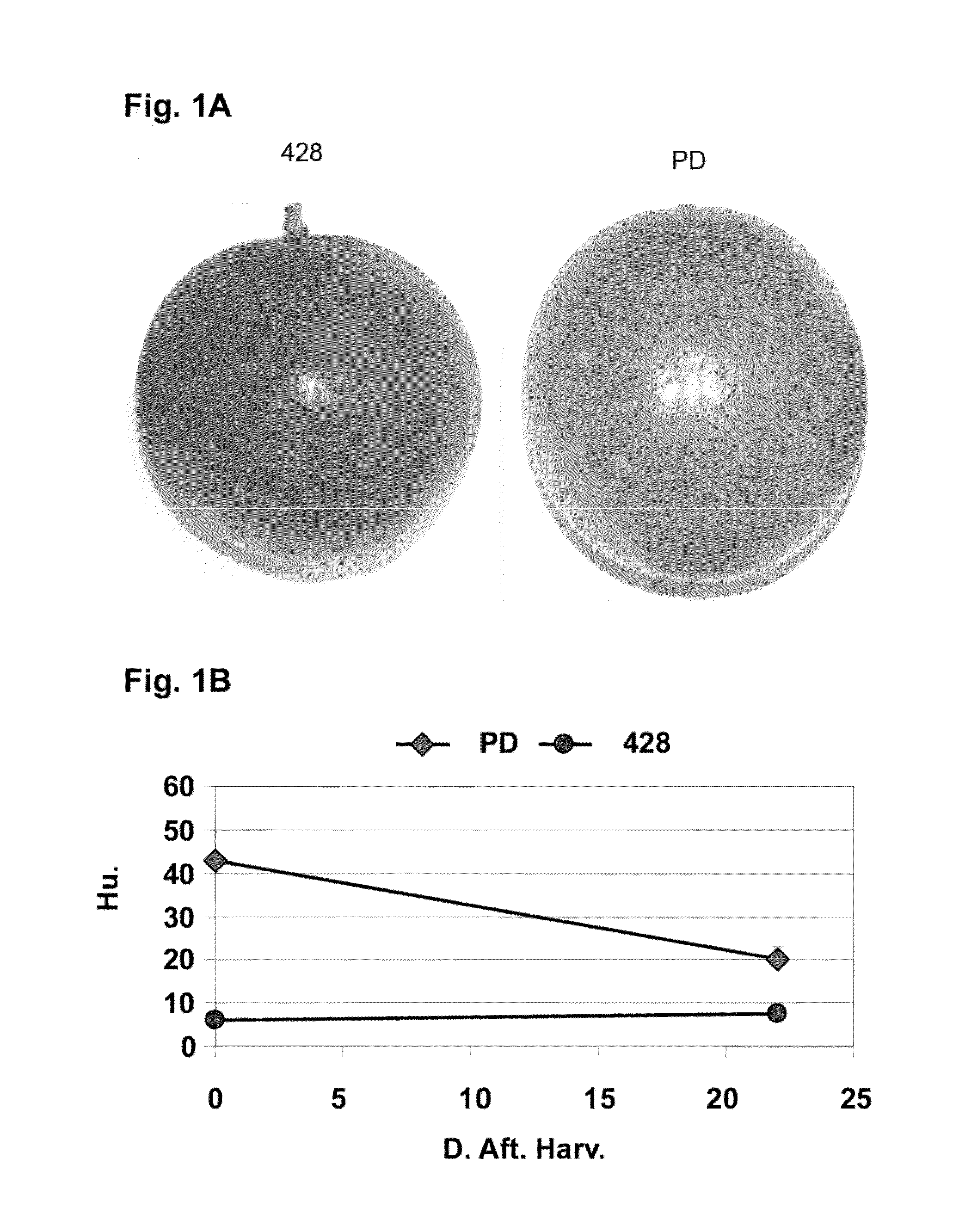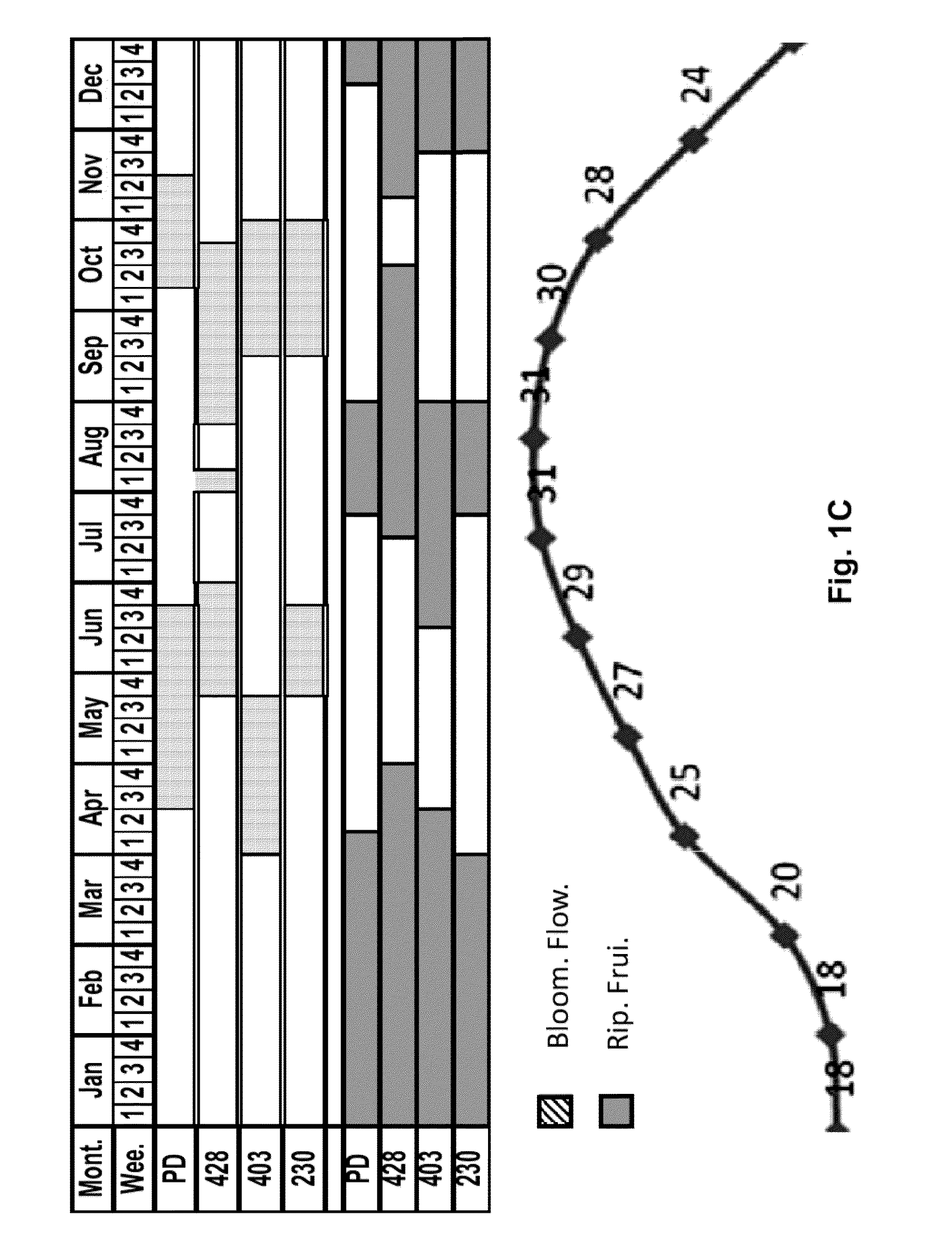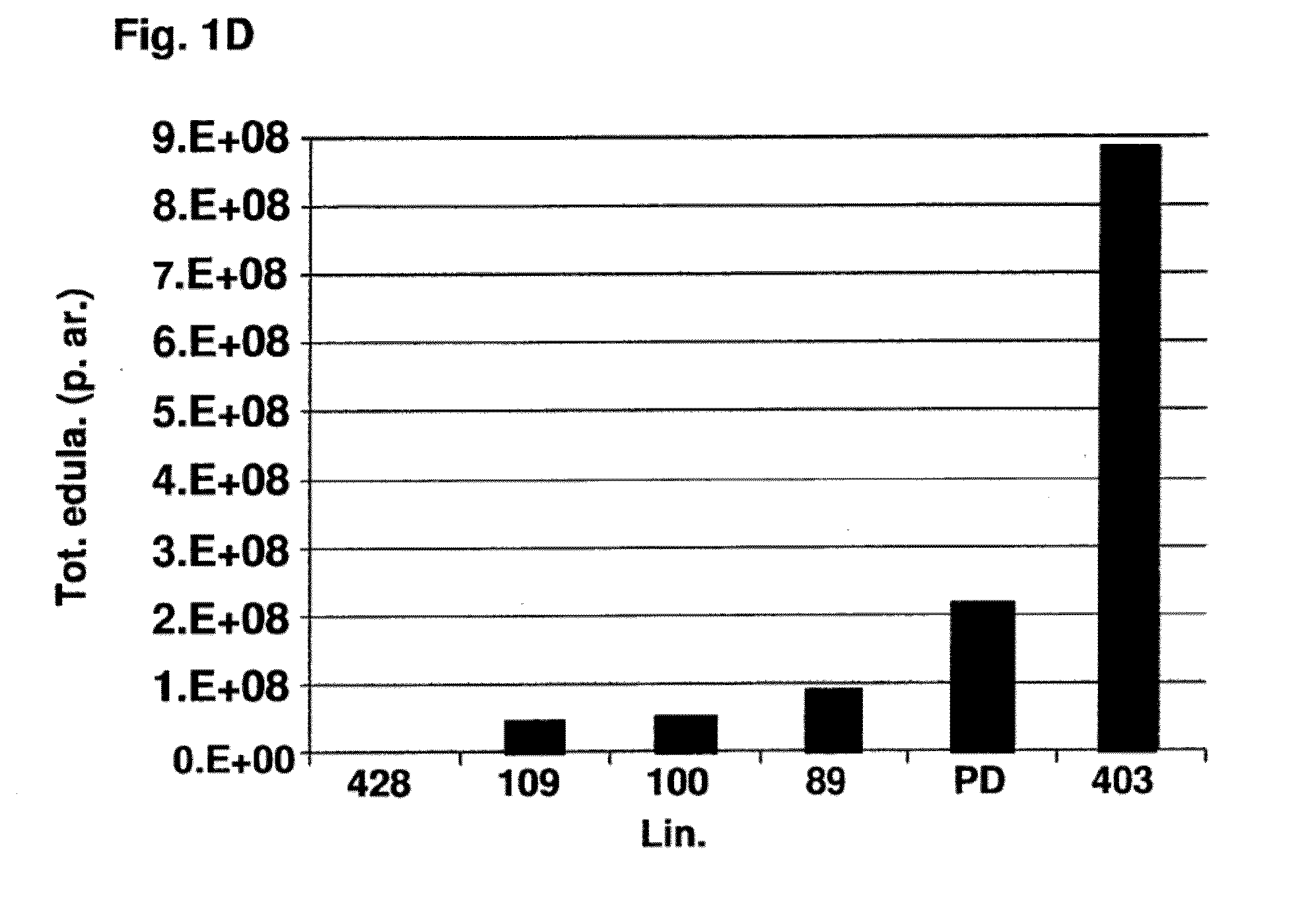Neuroprotective Natural Extract from Passion Fruit
a passion fruit and extract technology, applied in the field of natural neuroprotective extracts and preparations, can solve the problems of not having a cure, limited actionable evidence for the neuroprotective activity of specific edible fruits, and imposing a burden on caregivers, health care systems and society, etc., to delay the onset of neuropathological conditions, and improve the effect of neuroprotective activity
- Summary
- Abstract
- Description
- Claims
- Application Information
AI Technical Summary
Benefits of technology
Problems solved by technology
Method used
Image
Examples
example 1
Physico-Chemical Characterization of the New Cultivar 428
[0316]Upon the identification of a new passion fruit cultivar, which the inventors designated as cultivar 428 (also referred to cultivar “RS” or “Dena”), they set about its characterization. FIG. 1A show the different morphology and skin color of the 428 cultivar fruit as compared to the known PD fruit. As can be seen, the 428 fruit is rounder and smaller than the PD fruit. 428 plants show much less vegetative growth compared to the PD cultivar, and in some conditions, 428 plants appear less green and more yellow, suggesting less chlorophyll due to lack of minerals such as iron. The skin hue of the 428 cultivar fruit is dark and purple, and remains so throughout summer and winter, while the skin of the PD fruit is lighter and changes gradually between seasons (FIG. 1B). FIG. 1C illustrates the blooming and ripe fruit seasons of different cultivars between April 2009 and March 2010 in Israel. Very similar blooming and fruit rip...
example 2
Passion Fruit Cultivars PD (Passion Dream) and 428 Extracts Protects HT-4 Cells from Glucose Oxidase Challenge
[0322]HT-4 cell line treated with glucose oxidase demonstrated extensive death as a result of oxidative stress induced by this enzyme. Concomitant treatment with glucose oxidase and a concentrate of different passion fruit cultivars harvested on several dates revealed that all cultivars examined are able to protect from cell death induced by the glucose oxidase treatment. This protection against cell death was shown to be more effective in cells treated with passion fruit concentrate than in the positive control cells treated with NAC, as can be clearly seen in FIGS. 3A-3C. The highest percentage of cell viability was observed after treatment with extracts from cultivar 428 and PD, as shown in FIGS. 3B and 3C.
example 3
The Component from Passion Fruit Cultivars PD (Passion Dream) and 428 Extracts which Protects HT-4 Cells from Glucose Oxidase Challenge Acts in a Dose-Dependent Manner and is Heat-Labile
[0323]FIGS. 4A and 4B show that treatment with the concentrate of these two cultivars after induction of cell death by glucose oxidase as in Example 1 revealed that the protective effect is dose dependent and therefore may increase with higher doses of concentrate. Boiling the concentrate reduced its positive effect significantly (FIG. 4C).
PUM
 Login to View More
Login to View More Abstract
Description
Claims
Application Information
 Login to View More
Login to View More - R&D
- Intellectual Property
- Life Sciences
- Materials
- Tech Scout
- Unparalleled Data Quality
- Higher Quality Content
- 60% Fewer Hallucinations
Browse by: Latest US Patents, China's latest patents, Technical Efficacy Thesaurus, Application Domain, Technology Topic, Popular Technical Reports.
© 2025 PatSnap. All rights reserved.Legal|Privacy policy|Modern Slavery Act Transparency Statement|Sitemap|About US| Contact US: help@patsnap.com



